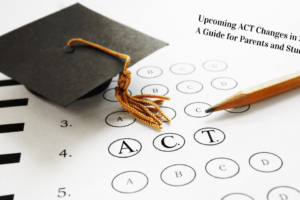
Class Size Definitely Matters: Why You Should Be Concerned About Your Child’s Classroom
Class size has been one of education’s most significant issues for the last several decades. With school budgets limiting the number of educators they can hire and the physical school size limiting the number of classrooms in the building, it is common to see class sizes of 30 students or more.
This is terrible news for your children.
In college, it is acceptable for courses with a class size of 100 or more, as these students can effectively learn with less supervision. But in elementary, junior high, and high school, it is essential to know that the number of students in the classroom should be limited.
The research demonstrates that students learn best when they aren’t packed into a classroom like sardines.
- A study conducted in Tennessee beginning in 1985 for kindergarten through third-grade students showed that class sizes of 13 to 17 students outperformed the larger classes of 22 to 25 students.
- Numerous states have released test scores showing students scoring higher in smaller classes.
- Research states that the students are more actively engaged, and attendance is better when there are manageable class sizes.
- Stronger relationships are formed when class sizes are kept under control.
- 9 out of 10 educators say students would learn better if class sizes were reduced.
Does Your Child Attend a School Where Class Sizes Have You Concerned?
Sometimes as parents, our hands are tied. It all depends on where you live. The local public school district could have classes of 20 or fewer students if the town or city’s population is on the low side. Still, other larger districts could have class sizes of 30 or more, which is considered normal for that area. And it is no coincidence that large urban areas usually experience the lowest scores on average since class sizes routinely are 30 students or more per classroom.
There Are Alternatives
If you worry about the number of students in your child’s classroom, there are options to consider to ensure your student receives optimal learning opportunities.
- Have you considered homeschooling? Homeschooling is more popular now than ever before. Plus, plenty of free homeschooling curriculums are available if you doubt your ability to teach your child. With a pre-planned curriculum, you can facilitate already-prepared lessons. Plus, in most states, there are no mandatory homeschool requirements, so starting one in your home should not be a problem.
- Online schooling is available, where students take their classes entirely through the internet. The parents are not actively educating their child in this situation as the child will have a teacher or teachers to educate them online.
- Most private schools have low-class sizes and are ideal for helping students further their education to the utmost degree. Of course, the problem with private schools is they can be pretty expensive. It might take some research to find one that is within your budget.
- Parochial schools are perfect for parents wanting to tie in religious beliefs with classroom education. Plus, the cost of sending your children to one of these schools can often be quite reasonable when comparing the price of a private school or boarding school.
Fight For Your Children
You don’t have to grin and bear it regarding class sizes. If you feel your child would perform much better in an educational facility that limits the number of students in one classroom, then explore your options.
In the Meantime
Smaller class sizes allow teachers to spend a good amount of time working with each student. A little one-on-one attention can ensure the students are doing well in each subject as weaknesses and strengths are identified.
If you feel your child is not receiving enough one-on-one help, iAchieve has you covered. We have professional tutors that work with any subject or grade level. We can tutor your child in person or entirely remotely. Whatever works best! With a little planning and professional tutoring, even if your child is in large classes, they will still be able to perform to the best of their ability.
RELATED BLOG POSTS
5 Classroom Management Tips for Every Classroom
6 Smart Ways to Bring Spontaneity into Your Classroom
Ways to Incorporate Important Life Lessons into the Classroom Curriculum



